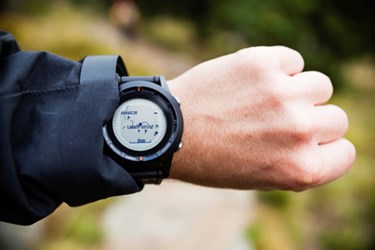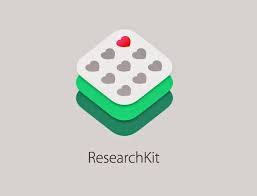How Wearable Electronics Will Change Clinical Trials

Advances in sensor technology and microelectronics have opened new opportunities in the health and life sciences industries. Wearable sensors allow for continuous bio-monitoring without any manual intervention, thus reducing provider-patient interaction and costs while contributing improvements in the quality of the data.
Wearable electronics, or wearables in short, are light electronics with embedded bio-sensors that can be comfortably worn on clothes or the body. Some of today's wearable electronics include Fitbit wristbands, Google and SONY glasses, and, most impactful, the Apple Watch. The term ‘wearable electronics’ is quickly becoming part of the consumer's vocabulary, and the market growth is expected to be impressive: from $22.7 billion in 2015 to $173.3 billion by 2020[1].
However, skeptics are pointing to the lukewarm success of the Fitbit wristband, which one-third of owners stopped wearing after six months [2]. Also, given that current wearables only provide basic monitoring, they don't significantly contribute to patient treatment, and doctors are not clamoring for patients’ heart rate and caloric output data to be added to their medical records. Finally, turning consumer’s wearable electronics into medical devices requires compliance, validation, and clinical trials, and the FDA has thus far been silent on this topic (although experts privately say that the FDA will not likely stand in the way of innovation).
 These arguments were valid until the recently launched Apple Watch and a renewed emphasis on the Research Kit. Just like Apple redefined the MP3 music player, the smart phone and computer tablet industries, they can similarly leverage their immense technology, marketing and distribution power to materially impact healthcare. The Apple Watch has already made wearables a fashionable, must-have item, with 30 million units expected to be sold in the first year [3]. But perhaps the biggest news about the Watch launch is the re-introduction of the Research Kit technology that is expected to transform patient recruitment and data collection. With the Research Kit, iPhone and Apple watch owners will be able to download clinical apps and allow their data to be collected and anonymized. In partnership with IBM, Apple devices will collect unfathomed amounts of clinical data for different populations and diseases and store them in the IBM’s Watson Healthcare cloud.
These arguments were valid until the recently launched Apple Watch and a renewed emphasis on the Research Kit. Just like Apple redefined the MP3 music player, the smart phone and computer tablet industries, they can similarly leverage their immense technology, marketing and distribution power to materially impact healthcare. The Apple Watch has already made wearables a fashionable, must-have item, with 30 million units expected to be sold in the first year [3]. But perhaps the biggest news about the Watch launch is the re-introduction of the Research Kit technology that is expected to transform patient recruitment and data collection. With the Research Kit, iPhone and Apple watch owners will be able to download clinical apps and allow their data to be collected and anonymized. In partnership with IBM, Apple devices will collect unfathomed amounts of clinical data for different populations and diseases and store them in the IBM’s Watson Healthcare cloud.
 The Research Kit will potentially corral the difficulty and the cost of recruiting subjects for clinical trials. Current campus flyers and mass mailing approaches are not very productive. According to Kathryn Schmitx, PhD Penn Medicine, an email campaign sending out 60,000 emails led to just a few hundred patients for a breast cancer trial. Similarly, it can cost sponsors thousands of dollars per subject when patients are enrolled by physicians.Compare these methods to John Wilbank’s, developer of mPower, a Parkinson’s App for the Research Kit. He tweeted, “After six hours, we have 7,406 people enrolled in our Parkinson’s study. Largest one ever before was 1,700 people. #ResearchKit”. Bloomberg reported that Stanford University’s cardiovascular trial attracted 11,000 volunteers in one day after releasing their MyHeart Counts App in the App Store. It would normally take a year[4] to enroll that many subjects. This data is anecdotal, but it seems that the Research Kit has the potential to make a tremendous difference in patient recruiting.
The Research Kit will potentially corral the difficulty and the cost of recruiting subjects for clinical trials. Current campus flyers and mass mailing approaches are not very productive. According to Kathryn Schmitx, PhD Penn Medicine, an email campaign sending out 60,000 emails led to just a few hundred patients for a breast cancer trial. Similarly, it can cost sponsors thousands of dollars per subject when patients are enrolled by physicians.Compare these methods to John Wilbank’s, developer of mPower, a Parkinson’s App for the Research Kit. He tweeted, “After six hours, we have 7,406 people enrolled in our Parkinson’s study. Largest one ever before was 1,700 people. #ResearchKit”. Bloomberg reported that Stanford University’s cardiovascular trial attracted 11,000 volunteers in one day after releasing their MyHeart Counts App in the App Store. It would normally take a year[4] to enroll that many subjects. This data is anecdotal, but it seems that the Research Kit has the potential to make a tremendous difference in patient recruiting.
 Streamlining and automating patient data collection
Streamlining and automating patient data collection
Today’s Apple Watch bio sensors are pretty basic and include a four-ring infrared optical sensor to measure heart rate; an accelerometer to measure balance, sleep pattern, gait, and activity level; a microphone to analyze speech impairment; and a speaker to test hearing. Additionally, certain functionalities provided by the iPhone (which is required to enable many features on the Apple Watch), can collect additional data, such as photographic evidence of health issues and distance traveled using the GPS.
The Apple Watch bio-sensors will soon be extended by a plethora of advanced sensors and other wearable testing instruments to bring data collection to the next level, including skin temperature, ECG, Galvanic Skin Response, and others, such as those contained in the recently launched Metria’s IH1™ biosensor[5]. The automatic collection of additional vital signs and health status data will likely trigger significant changes in the patient-provider relationship with regards to health data.

A few years ago, the FDA approved Proteus, an ingestible biosensor to monitor drug compliance [6]. This kind of biosensor would, among other things, be able to test body fluids to establish, in real time, data that otherwise requires a blood draw and analysis at a lab. This futuristic ‘e-pill’ demonstrates the convergence of drug, medical device, biosensors, and nano technologies. For example, as a preparation for the first mission to Mars (still decades away), NASA has been developing ingestibles with therapeutic capabilities to keep astronauts monitored and healthy. If it sounds like science fiction, it kind of is, but then again, so is receiving a phone call on your watch!
The broad adoption of biosensors by consumers, combined with advances in Nano and Cloud technologies are expected to radically change the way research is conducted by the Life Science industry, improving patient recruiting and monitoring, while lowering development and therapy cost.
Sources
[1] http://www.researchandmarkets.com/research/hgdx6p/wearable
[2] http://mobihealthnews.com/31697/survey-one-third-of-wearable-device-owners-stopped-using-them-within-six-months/
[3] http://bgr.com/2014/07/14/apple-iwatch-price-and-sales
[4] http://mendelspod.com/podcasts/gene-and-tonic-iwatch-and-research-kit-23andme-goes-big-time-no-spaceship/
[5] http://vancive.averydennison.com/en/home/technologies/metria.html
[6] http://davidleescher.com/2012/09/04/five-reasons-why-proteus-is-the-holy-grail-of-digital-health/
- Tags:
- #ResearchKit
- Apple Research Kit
- Apple Watch
- bio-monitoring
- bio-sensors
- clinical apps
- clinical trials
- data collection
- data quality
- Fitbit wristbands
- IBM Watson Healthcare cloud
- ingestible biosensor
- John Wilbank
- Kathryn Schmitx
- life sciences industries
- Medical Devices
- Metria’s IH1™ biosensor
- microelectronics
- mPower
- MyHeart Counts app
- Parkinson’s App
- Proteus
- sensor technology
- wearable electronics
- wearable sensors
- Login to post comments